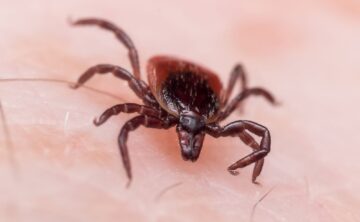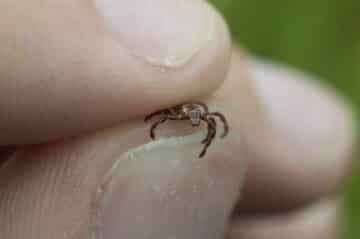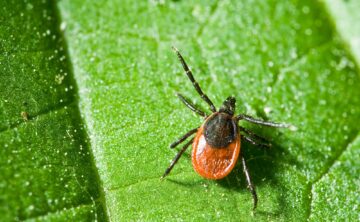Tips to Keep Ticks Off Your Family and Out of Your Home
There are approximately 1,000 cases of tick-borne illnesses, including Lyme disease, diagnosed in Minnesota every year. Certainly, this is cause for concern for you, your family, and your pets. Minimizing exposure and ensuring you take precautions when exploring the outdoors during peak tick season are the best way to keep your loved ones tick-free. These do-it-yourself tips from our experts will help you brush up on the best ways to keep ticks off your family and out of your home!
Where am I likely to find ticks in Minnesota?
Places that stay cool and damp are favorite hideouts for ticks. Think shady wooded areas, swamps, tall grasses, shrubs, and leaf litter. If your home borders a spot with these conditions, ticks can also be found in your yard.

Ticks are also common along trails used by host animals like rodents and deer. Even if you’re careful to check pets and people for ticks, wild animals can carry them into your yard. Young developing ticks may also attach themselves to home invaders such as mice. Additionally, pets that spend time outdoors can carry ticks into your home.
Tips for avoiding ticks when you’re enjoying the outdoors
The best way to prevent a tick bite is by avoiding contact with ticks
- Avoid tick-friendly areas in your yard, especially in the spring.
- Wear clothing that fully covers all exposed areas, including a hat.
- When hiking, stay out of areas with brush or tall grasses. Walk in the center of groomed trails.
Apply insect repellent to yourself & outdoor items
- The CDC recommends EPA-registered repellents containing DEET, picaridin, IR3535, Oil of Lemon Eucalyptus, para-menthane-diol, or 2-undecanone.
- For added protection, treat outdoor clothing and gear with Permethrin. This will repel ticks, and kill them on contact.
- Don’t forget to treat tents and backpacks, because they can carry ticks.
- Reapply treatments according to package instructions. Many fabric treatments last for 3-5 washings.
Check yourself, family members, and pets thorougly after outdoor activities in tick prone areas
- When checking, be sure to focus on areas where ticks could hide, like under the arms, the groin, ears, waistline, and hair.
- Use a tick prevention product on dogs. Talk to your vet before using any product on cats, because they are extremely sensitive to chemicals.
Additional resources for choosing the best tick repellents:

How do tick bites transmit disease?
Ticks feed on their hosts by piercing the skin and inserting a tube to suck blood. Some ticks also have a chemical in their saliva that numbs the host. As a result, they can go unnoticed which allows them to feed longer. A tick may pick up pathogens from an infected host and then spread the infection when it bites the next animal. Visit the Centers for Disease Control and Prevention to learn more about which ticks carry disease and where they are found. See which ticks are found in your region.
Ticks in the snow?!

Can I prevent ticks myself?
Tick tubes, which are filled with treated cotton balls, can be placed in areas frequented by mice (which are frequent carriers of ticks). This helps to prevent ticks from hitchhiking into your property—and home.
You can purchase tick tubes over the counter for a do-it-yourself approach. Want an expert to do it for you? Rainbow Pest Experts offers tick control!
Other items you may be interested in:

Mosquito & Tick Control
Eliminate the incessant swatting, buzzing, and biting of mosquitoes and ticks for your next outdoor social event or home BBQ.

Bad News About Ticks in Minnesota
It’s not your imagination. Ticks and tick-borne illnesses are showing up in the news a lot these days. Unfortunately, it’s because more people are getting

Protect Your Backyard Paradise from Mosquitoes
Summer in Minnesota can be paradise. Except for the mosquitoes–sometimes referred to as the state bird–and rain. While you can’t do anything about the weather,



